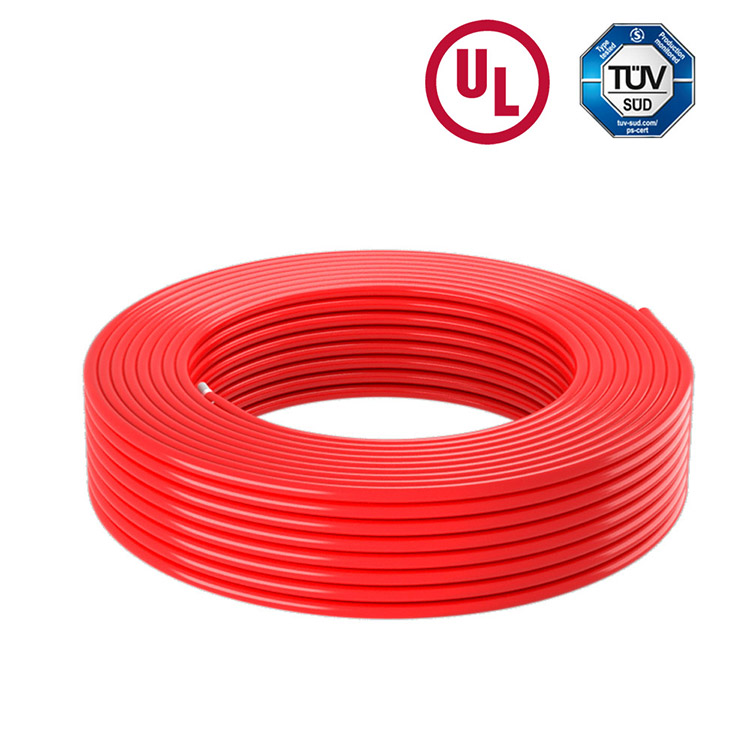 Author: Joey Wan
Author: Joey Wan  September 23,2023
September 23,2023
As concerns for the environment grow, more and more public places are turning to solar energy to power their facilities. This shift towards renewable energy has opened up a new market for photovoltaic power generation systems, and the demand for high-quality installation components like solar panel wire, solar panel extension leads, and PV wires has increased significantly. In this article, we will explore the specific needs of different installations and the various options available that can help ensure efficient installation and reliable performance.
Solar panel wire
When it comes to connecting solar panels to the rest of the system, solar panel wire is a vital component. This type of wire is specially designed for outdoor use in harsh environments, and is typically black or red in color to identify the positive or negative polarity of the wire.
A typical solar panel wire will be rated for 600 volts, with a temperature range of -40 to 90°C, and a breaking strength of around 200 pounds. It is also typically UL Listed and meets NEC (National Electric Code) standards.
Solar panel extension lead
In some installations, the distance between the solar panels and other components of the system may require the use of extension leads. These are typically pre-wired wires with connectors that allow for easy connection to the rest of the system.
A typical solar panel extension lead is rated for 600 volts, and has a temperature range of -40 to 90°C. It is also typically UL Listed and meets NEC standards.
PV wire 10 AWG
PV wire is another essential component for larger photovoltaic power generation systems. This type of wire is specifically designed for use in solar energy applications and is used to connect solar panels to combiner boxes and inverters.
A typical PV wire will be rated for 1000 volts, with a temperature range of -40 to 90°C. It is also typically UL Listed and meets NEC standards. PV wire is available in various sizes, with 10 AWG being the most common size used in larger installations.

Solar panels with USB output
In some public places, solar energy is being used to power phone charging stations and other electronic devices. This has led to the development of solar panels with USB output, which can deliver power directly to USB-enabled devices without the need for additional components.
These solar panels typically come with built-in USB ports, and can be used to charge smartphones, tablets, and other devices. They are great for public areas like parks, beaches, and public plazas where people can charge their devices while enjoying the outdoors.
2 AWG solar cable
For larger installations that require higher current-carrying capability, 2 AWG solar cable is the go-to choice. This type of cable is designed to handle more current than smaller cables and is used in larger systems with higher power requirements.
A typical 2 AWG solar cable will be rated for 600 volts, with a temperature range of -40 to 125°C. It is also typically UL Listed and meets NEC standards.
4 AWG solar PV wire
4 AWG solar PV wire is another choice for larger installations with higher current requirements. This type of wire is designed to carry more current than PV wires, making it ideal for larger systems with a high-power output.
A typical 4 AWG solar PV wire will be rated for 1000 volts, with a temperature range of -40 to 90°C. It is also typically UL Listed and meets NEC standards.
12 AWG solar wire
12 AWG solar wire is typically used for smaller installations with lower current requirements. It is smaller in size than 2 AWG and 4 AWG cables but is still designed to provide reliable performance and can handle up to 20 Ampere current.
A typical 12 AWG solar wire will be rated for 600 volts, with a temperature range of -40 to 90°C. It is also typically UL Listed and meets NEC standards.
10 AWG solar wire
10 AWG solar wire is another popular choice for smaller installations like residential and small commercial settings. It is a good choice for lower voltage systems that need to transport less current and provide good electrical stability.
A typical 10 AWG solar wire will be rated for 1000 volts, with a temperature range of -40 to 90°C. It is also typically UL Listed and meets NEC standards.
